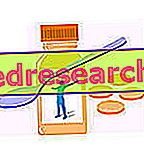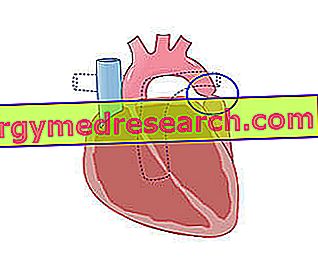Generality
Compulsive shopping is a disorder characterized by the overwhelming need to make purchases, despite the awareness of their uselessness or exaggeration.

The repetition of episodes of compulsive shopping can lead the person to buy often and / or considerable quantities of objects, in addition to inducing them to spend a lot of time in shops and department stores. In many cases, then, the goods purchased are destined to be immediately put aside or even thrown away. At the end of the episode, in fact, the person who has an addiction to shopping often experiences profound feelings of guilt and shame .
Clearly, the repetition of this behavior can have serious consequences on a psychological, financial and relational level.
Buying compulsion seems to occur more frequently as a symptom of a previous discomfort secondary to mood disorders, substance abuse, difficulty in accepting, low self-esteem and depression. In any case, the condition can be addressed with a psychotherapeutic approach.
Compulsive shopping is also called " compulsive buying syndrome ", " shopping addiction " and " shopaholism ".
The disorder was known as early as the nineteenth century, when the German psychiatrist Emil Kraepelin first identified the associated symptoms and defined it as "oniomania" (from the Greek "onios" and "mania", or "mania to buy what is for sale ").
Causes
As a rule, shopping is a gratifying activity : at the time of purchase, one is generally feeling euphoria and excitement, as the brain releases neurotransmitters, dopamine and serotonin, responsible for the sensation of pleasure, well-being and contentment.
According to some psychiatrists, the alteration of the activity of these substances would cause various disorders, including the failure to control impulsiveness . For this reason, in people who are addicted to shopping, the temptation to buy becomes so difficult to manage.
Subjects with this disorder, especially young women, buy initially for the pleasure that comes from a new purchase. In a short time, however, this emotional state becomes a growing tension and the desire to buy becomes an irrepressible impulse . This gives rise to the compulsive purchase of objects of all kinds, which are often set aside (so much so that they are not removed from their packaging), given to others or thrown away. Moreover, after an episode of compulsive shopping, the euphoria vanishes and the person experiences feelings of guilt, anguish and shame, emotions that again require compensation that results in a new purchase. A vicious circle is thus established.
Compulsive shopping has pathological characteristics very similar to those that can be found in drug addictions :
- Tolerance phase : induces people who have a compulsive shopping addiction to progressively increase the time and money allocated to purchases, in order to alleviate the tension they feel;
- State of "craving" : consists in the inability to control the impulse that leads to putting into practice the behavior, ie the compulsion to purchase objects in order to alleviate an unpleasant feeling and suffering;
- Abstinence : produces a great malaise in the compulsive shopper who, for some reason, finds himself unable to make purchases.
- Loss of control : the drive wins over the subject's resistance, which will justify the purchase of an object as necessary, useful and indispensable.
In reality, it is not yet completely clear whether compulsive shopping is due to a series of irresistible impulses that repeat themselves over time or if it is a response to "obsessive" behaviors, which a person must perform to placate through a series of rituals, at least temporarily, of anxious thoughts or psychological disorders, such as depression.
What is a compulsion?
By compulsion we mean a particular action, often repetitive and inadequate. This sort of stereotyped ritual is put in place by the subject in order to reduce the anxiety and discomfort due to an obsession, that is, a recurring and pervasive thought that the subject judges as excessive and inappropriate, but which he cannot escape.
Characteristic behaviors
Compulsive shopping is a complex phenomenon: this repetitive and uncontrollable behavior completely absorbs the individual, with a significant impact on time management and finances.
The compulsive shopper cohabits with the constant thought of shopping and frequently buys above his possibilities. The buyer feels the desire to make purchases regardless of the time of year, so not exclusively during seasonal sales (the phenomenon can be repeated several times a week). The people most at risk of developing this condition are mainly women aged between 20 and 30 years.
People with a shopping addiction are distinguished, from those who practice it as a normal activity, for the following aspects:
- The act of buying is experienced as an irresistible, intrusive and / or senseless impulse;
- Purchases are frequent and are often above their economic possibilities;
- The worry and the impulse to buy cause marked stress and can interfere with work and interpersonal relationships, or cause financial problems (such as indebtedness or dismissal);
- The drive for purchase is directed towards objects that are mostly useless, very expensive or that you don't really need;
- Fulfillment is experienced in the act of spending and not in the possession of the object;
- In the case of bipolar mood disorder, over-buying does not occur exclusively during periods of mania or hypomania.
The episodes of compulsive shopping tend to develop with a sequence of regular phases :
- The compulsive buyer begins to have thoughts, worries and a sense of urgency towards the act of buying, both in general and regarding a particular object. This first phase is usually preceded by unpleasant emotions such as sadness, anxiety, boredom or anger.
- The person prepares for the purchase planning some aspects, such as the shops to visit or the kind of items to be searched.
- The compulsive shopper is excited by the objects he sees, which appear useful and indispensable.
- The previously experienced feelings of excitement and euphoria quickly turn into frustration, guilt, shame and disappointment towards them.
Thus, compulsive shopping is characterized by certain emotional states, rather than by real needs or desires.

This leads the compulsive buyer to hide purchases from family members, to eliminate them by giving gifts or throwing them away to forget them as soon as possible.
Possible consequences
The impulses that lead to unstoppable buying make the shopper compulsive slave of his behavior: not buying causes serious anxiety crisis, panic and frustration.
In the long term, compulsive shopping causes problems at work and at home, as well as causing personal distress in terms of stress. The person with this problem can also be a victim of debt or financial loss, of separations or divorces.
The situation can degenerate and even lead to suicide.
Diagnostic framework
To date, compulsive shopping is generally associated with impulse control disorders, characterized by the subject's inability to resist an impelling temptation that leads him to the realization of a dangerous action for himself and / or other people. This unstoppable thrust is preceded by a feeling of increasing tension and excitement, followed by pleasure, gratification and relief; subsequently, in general, such feelings leave room for a feeling of remorse or guilt. This includes conditions such as kleptomania, pathological gambling and pyromania.
However, compulsive shopping was not officially recognized by the American Psychiatric Association, so it is not currently reported in this diagnostic category in the "Diagnostic and Statistical Manual of Mental Disorders".
In any case, to understand when the desire for shopping turns into a pathological compulsion to buy, it is possible to pay attention to the following signals :
- The money spent is excessive compared to one's real economic possibilities;
- Purchases are repeated several times during the week;
- The items purchased are often useless and immediately after purchase are put aside;
- Failure to purchase creates anxiety and frustration;
- Buying behavior is a new phenomenon compared to the past.
Since compulsive shopping often presents itself as a problem linked to other disorders, it is the specialist (psychiatrist or psychologist) who must evaluate the present malaise, then come to formulate a diagnosis as complete as possible and establish the appropriate treatment for the case.
Care
Possible therapeutic approaches
Compulsive shopping can be tackled with psychotherapy aimed at identifying the underlying problems and interrupting the vicious circle between the person and the purchase of objects on which it depends. In this sense, the cognitive-behavioral approach can be useful, which can act on a greater control of the impulses and on the concept of self-esteem and devaluation of the self.
In addition to these interventions, the specialist can recommend a drug therapy to manage depressive or anxiety disorders that are associated with compulsive shopping. Most often, the indicated medications are antidepressants, which serve to stabilize mood, or medicines that keep obsessive ideas in check.
Useful tips
Some strategies may be useful in the management of compulsive shopping. First of all, the subject must become aware and demonstrate determination in dealing with this issue. For this purpose, it is advisable to keep a diary on which to record the expenses, in addition to indicating the day and time in which these were made.
The unstoppable impulse to buy and spend can be tackled by asking if you are buying something that you really want, avoiding imposing bans on your behavior (the desire to break them increases); it may also be useful to try to loosen the compulsion by visiting the stores without buying anything, at least for the first hour.
Compulsive shopping can also be controlled by taking the following measures:
- Make a shopping list and buy only what is present in this;
- Pay with cash and use a credit card only in case of emergency;
- When there is an urge to visit a store to make non-essential purchases, engage in a sporting activity or a walk.



